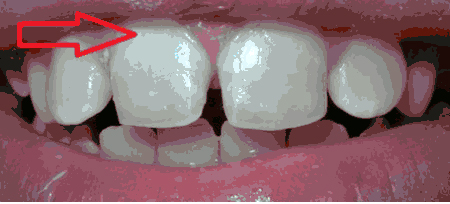Fluorosis is the disease that occurs due to prolonged intake of high doses of fluoride. The
consumption of water containing fluoride most often affects the content of the element in the bones.
Mississippi Dentists: “The treatment of dental fluorosis is virtually impossible. A lot of modern dental clinics conduct researches and provide recommendations to limit the amount of fluoride that enters the body of the child.”

Fluoride is also present in foods and even in toothpastes, but there it is not absorbed in such amount as the fluoride in the water. Therefore, fluorosis is endemic, that is, the disease typical for a particular area, where the water is saturated with fluorine. Children and adolescents who have not yet erupted the permanent teeth are most susceptible to endemic fluorosis.
Fluorosis in children manifests not only to the scarcity of minerals, it also shows their excess. The lack of fluoride arises certain dental health problems in children: the tooth enamel becomes thinner, poorly protects teeth and dental caries of deciduous teeth begins, as well as developing the hypersthesia of teeth, that is hypersensitivity. Therefore, most toothpastes contain fluoride in an accessible amount. Besides, for both adults and children the fluorination procedure is offered to strengthen the enamel of the teeth and prevent tooth decay.
The daily requirement of fluoride at this age is 2-3 mg, which the child receives from food and water. For the development of the disease the maximum concentration fluorine in water is 1.5 mg per liter. Young children, at least until the school age, you cannot brush teeth with the toothpaste for adults, as it often contains a lot of fluoride, which for a young child is much higher than the permissible dose, and the excess of fluoride in the body can be even more dangerous than its deficit. If the child’s body during the dental germ formation and the tooth growth receives too much fluoride relative to the weight of the child, dental fluorosis develops. The disease is manifested by the appearance of white spots on teeth (in its mild form) and brown spots, and the discoloration of enamel in cases of intense excess of fluoride. The enamel becomes uneven, rough and ugly. Cleaning the teeth becomes impossible.
If the teeth are too unpleasant to look at, there are a number of aesthetic dentistry techniques to correct the defects. For more detailed information on these techniques, visit http://reviewfordentists.com/dentists/nebraska to find your local dental expert.